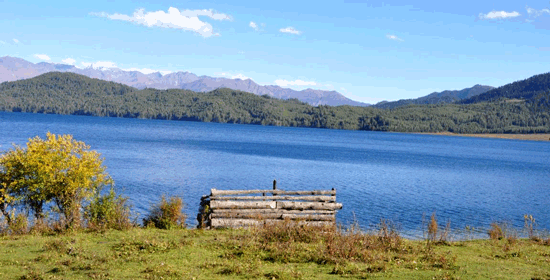 Travel
Travel
Introduction:
Rara National Park is located in the North-Westem high mountains of Nepal . The park was gazetted in 1976 to conserve the unique beauty of Lake Rara, and to protect the representative flora and fauna of the Humla-Jumla region. The park is Nepal's smallest protected area, comprising an area of 106 sq. km. There were two villages Rara and Chhapru within the park. The residents of the two villages were resettled in Banke district, outside the park.
Features:
Rara Lake (Mahendra Tal), situated at an elevation of 2990 m. is the main feature of the park. The lake is oval shaped with an east-west axis, and has a maximum length of 5 km and a width of 3 km. Surrounded by magnificent conifer forests, it is Nepal's biggest lake (10.8 sq . km) with a depth of 167 m. Its radiant blue waters is home to the snow trout (Schizothorax oreinus sinuatus), the only fish recorded in the lake.
During winter, bird lovers can enjoy many migratory birds. In summer, Himalayan flowers surround the lake creating a colorful landscape. The elevation of the park ranges from 2800 m to 4039 m. Chuchemara peak (4039 m) is the highest point in the park. Located on the southern side of the lake, it provides an excellent backdrop to Lake Rara. The snowcapped summits of Ruma Kand (3731m) and Malika Kand (3444m) located on the northern side of the lake, provide beautiful views of the lake to the south, and the beautiful Mugu-Kamali River valley to the north. MurmaPeak also provides and excellent view of the park area.
The lake drains to Mugu-Kamali River via Nijar Khola. The majority of the vegetation in the park is dominated by blue pine. Interspersed amongst the pines, are found several species of rhododendrons.Blue pine, herbs, marshlands, and tussock grasslands inhabit the area surrounding the lake. In the Nisa khola Valley pine and spruce give way to mixed woodland containing walnuts and Himalayan popular. Rhododendron, fir, oak, and birch species can be found in the sub alpine region.
Climate:
Summer is pleasant. However, winter is quite cold. The best time of year to visit the park is September/October and April to May. December through March, the temperatures drops to below freezing, and heavy snowfalls occur up to one meter, closing high passes.April to June is warm but the season gives way to monsoon season-June to August.
Flora and Fauna:
The reserve is characterized by , sub-alpine and high temperate vegetation. Common plant species include fir, pine, and birch, rhododendron, hemlock, oak, juniper and spruce. The park is home to around 20 different species of mammals. They include Musk deer, Himalayan black bear, Leopard, Jackal, Himalayan tahr, Yellow throated marten, Otter, Wild dog. Common langur. Rhesus macaque and Red panda. The park has recorded 214 species of birds. Some of the important species include coots, snow cock, and different species of pheasants, grebes, mallard, common teal, red-crested pochard and gulls. During winter, many migratory birds join the residential Gallinaceous birds.
Facilities:
It is advisable to bring a comprehensive first-aid kit since there is no health post in the area. Arrangements should be made through a trekking agency. There are no accommodations within the park. Trekkers must be self-sufficient in all means.
How to get there:
Rara National Park is 2.5 days trek via Jumala or 10 days trek from Surkhet.
Source: Department of National Parks and Wildlife Conservation
